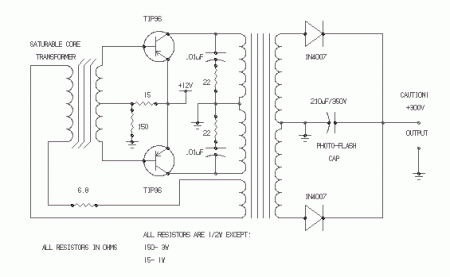

| Visitors Now: | |
| Total Visits: | |
| Total Stories: |

| Story Views | |
| Now: | |
| Last Hour: | |
| Last 24 Hours: | |
| Total: | |
A Better Inverter To Change DC Current to AC
It’s an idea that has really turned heads and garnered attention. The breakthrough was once thought impossible, but the new class of power inverter could put cheaper and more efficient renewable energy products on the market.
Power inverters are at the center of several renewable energy technologies. Solar power, battery storage, electric vehicles, motor drives and manufacturing robots all use inverters to generate to alternating current power efficiently.

Conventional Power Inverter Schematic. One wonders what Izadian’s idea is. Click image for the largest view.
Current power inverters with multiple switching transistors generate limited voltage levels. They are heavy, generate unwanted harmonics (voltage frequencies) and require filters to reduce the harmful effects to the electric grid. They are complex and expensive electrical devices essential to get from direct current back to alternating current.
Izadian’s invention is the result of a creative reconfiguration of an electrical circuit conceived during a laboratory experiment. The reconfiguration would make inverters cheaper, lighter and therefore more efficient than current models.
Izadian said in the University’s press release, “The thrilling moment of any research is when your thoughts, designs and implementations come out right and you reach the goal. An on-demand change of voltage polarity might not seem very exciting, but it becomes increasingly important if you can accomplish it while maintaining desired voltage amplitudes.”
Izadian made his discovery in a creative moment at his lab bench. He began reconfiguring an inverter circuit and discovered a new property technique to create infinite voltage levels and invert the voltage polarity of power circuits. This discovery in turn leads to a corollary insight that the researcher employed to create the new class of inverters.
Not only did the bench test work, it led to the discovery of several other circuits and controllers for high-power inverters with lower switching loss, higher voltage performance and lighter reconfigured circuits.
Voltage frequency harmonics are greatly reduced with Izadian’s invention. This means for example car manufacturers can reduce the size and insulation of traction motors so that electric vehicles can be made cheaper. The size and weight of the power electronics can also be reduced, which can boost fuel economy in hybrid cars and buses. Such advantages translate into lower costs promoting wider adoption of green technologies and more affordable renewable energy for homes, vehicles and businesses.
David J. Russomanno, dean of the School of Engineering and Technology adds, “We are delighted with Dr. Izadian’s work and the possibility that his inverter can impact the renewable energy market. His efforts are a quintessential example of the cutting-edge research that enhances the school’s image and reputation and allows us to compete in the renewable energy arena. The Lugar Center is a tremendous asset to the school’s creative and innovative research process.”
The status of the work has moved quickly. Izadian has several patents pending on his invention and is seeking research funding to complete the development of the analysis and controls needed for commercial viability. Izadian’s work is under review by a prestigious technical journal, and several large companies have shown interest in the new inverters. They are interested in how Izadian’s breakthrough can result in simpler, cheaper and smaller systems with better performance than today’s technology.
Should things work out, and they probably will, products could be ready for the marketplace in as little as three years.
2012-10-18 12:23:29
Source:


